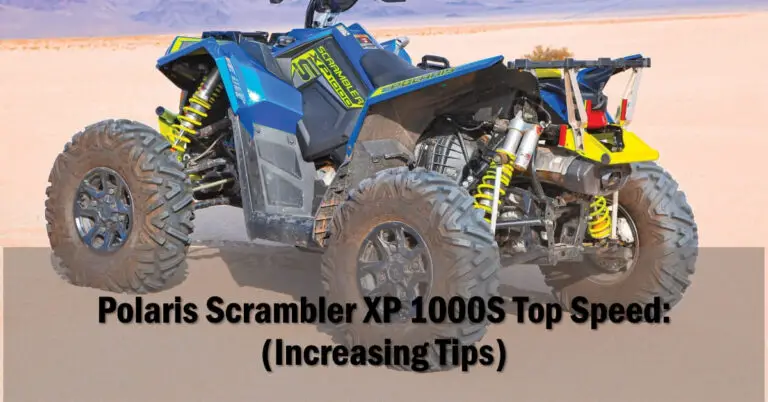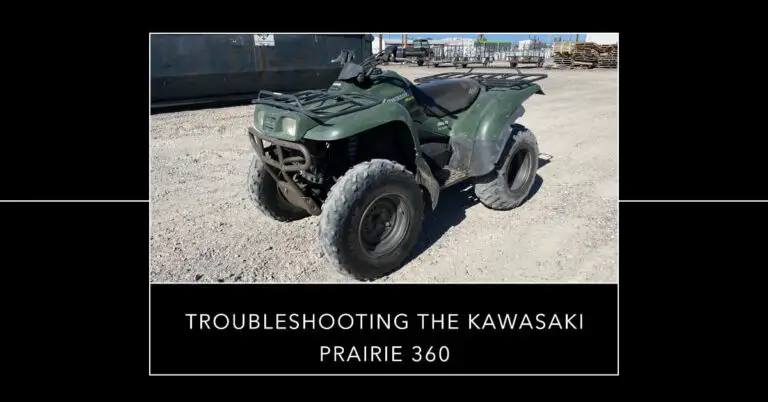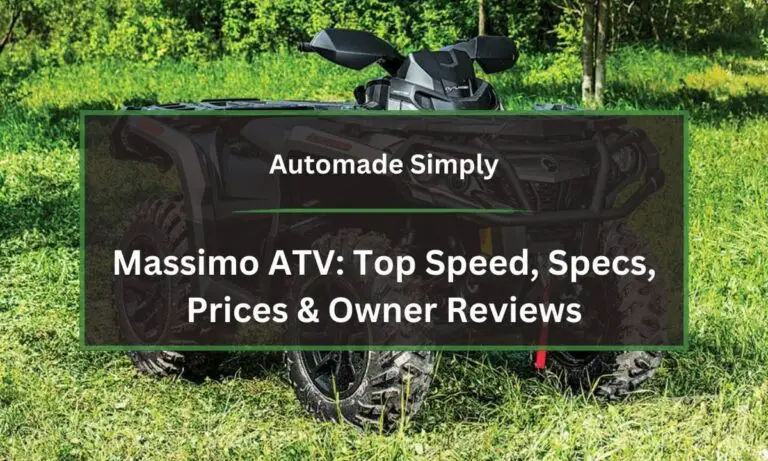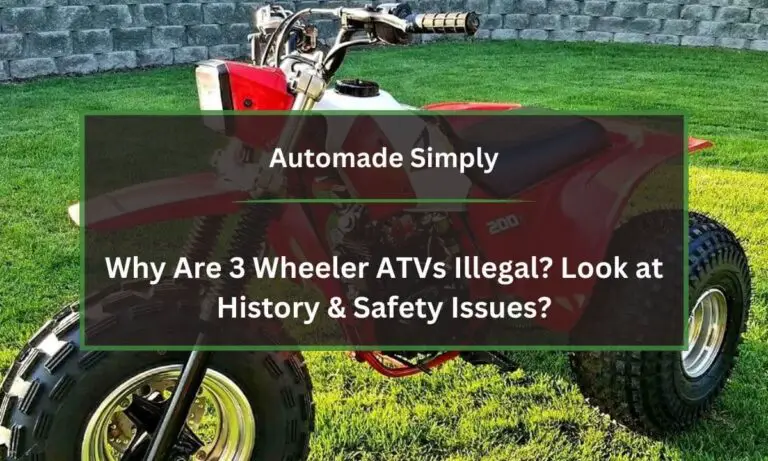Yamaha Raptor 125 Review, Top Speed, Specs & Price 2024
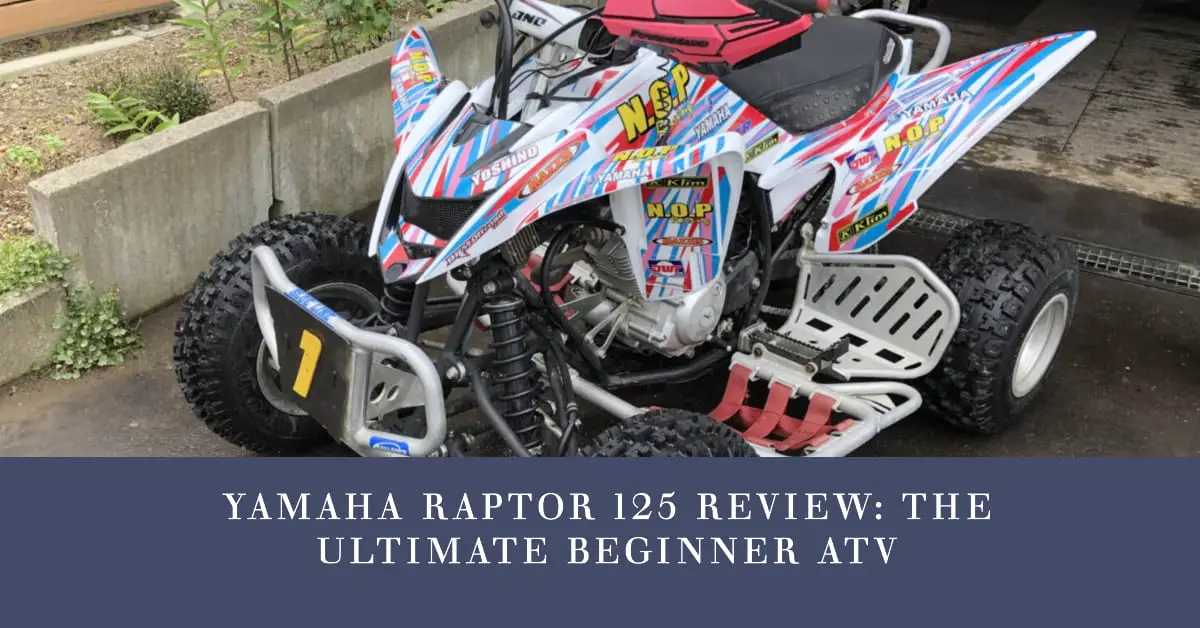
The Yamaha Raptor 125 is one of the best beginner ATVs available today. With its compact size, easy handling, and essential safety features, it allows new riders to experience off-road fun in a manageable package. If you’re wondering whether the Raptor 125 is the right starter quad for your child or yourself, this in-depth review covers everything you need to know.
We’ll take a close look at the Raptor 125’s engine performance, features, dimensions, capabilities, and more. You’ll also find a detailed pros and cons breakdown, top speed information, key specs comparison table, and a list of the best Raptor 125 alternatives. Let’s get started!
Table of Contents
Overview of the Yamaha Raptor 125 ATV
As a youth-sized ATV, the Yamaha Raptor 125 is designed to provide an approachable introduction to off-road riding. It gives beginners the chance to learn essential ATV skills like controlling the throttle, maintaining balance, and maneuvering over trails.
The Raptor 125 is targeted at riders around age 12 and up who want a sporty, youth-scaled quad. With its peppy 124cc engine and agile handling, it delivers an exciting trail riding experience while the safety features give parents peace of mind.
This beginner quad debuted back in 2006 as a successor to Yamaha’s previous youth models like the Breeze and Bear Tracker. Since then, it has become one of the best-selling starter ATVs on the market. Its continued popularity comes down to the Raptor 125’s proven durability, easy operation, and family-friendly size.
So if you’re ready to let your kid experience the thrill of ATVing for the first time or want a hobby ATV for yourself, the Yamaha Raptor 125 deserves strong consideration. Let’s take a closer look at why it’s such a great starter quad.
Yamaha Raptor 125 Engine and Performance
Powering the Raptor 125 is a four-stroke, air-cooled, single-cylinder 124cc engine. This compact powerplant provides excellent performance for a youth-sized ATV.
The engine generates peak power of 8.1 horsepower at 7,000 RPM. That gives the Raptor 125 significantly more grunt than competitors like the Suzuki LT80 and Honda TRX90X. Strong low-end torque delivery provides great acceleration off the line and responsive throttle control.
This motor isn’t designed for high top speeds. But the peppy powerband offers plenty of fun for new riders learning the ropes on trails. More experienced youth riders may want more top-end power after mastering the basics. But overall, the Raptor 125 engine offers a versatile blend of user-friendly acceleration and speed for beginners.
One advantage of the 124cc air-cooled engine is reduced maintenance requirements. With no liquid cooling system, owners avoid leak and overheating issues. This single-cylinder motor is proven to be very dependable over thousands of miles if basic maintenance is followed.
For shifting, the Raptor 125 uses an automatic centrifugal clutch system coupled to a 4-speed transmission. There’s no manual clutch lever for riders to worry about. This makes take-offs and shifting super simple for ATV newcomers.
A reverse gear supplemented by the electric starter simplifies getting out of sticky situations where you need to back up or reverse out of a parking spot. Altogether, the engine and drivetrain deliver accessible performance that instills confidence in new riders.
Raptor 125 Features and Capabilities
Yamaha designed the Raptor 125 with a range of rider-friendly features that enhance the ownership experience:
Key Features and Technologies
- Electric Start – Turning the key ignites the engine, so there’s no pull-starting required. This makes starting simple for kids or smaller riders.
- Reverse Gear – Engaging the reverse gear lets you slowly back out of tight spots. It’s a handy feature for maneuvering that isn’t commonly found on youth ATVs.
- Automatic Transmission – The auto clutch means no shifting or stalling to worry about. Riders can simply focus on working the throttle and brakes.
- Throttle Limiter – This adjustable screw reduces the throttle opening to limit top speed. It helps keep new riders from going too fast too soon. Parents appreciate the extra peace of mind.
- Centrifugal Clutch – This automatic clutch engages the engine smoothly to prevent stalling. It also lets the engine idle in neutral without moving the quad.
Along with those features, the Raptor 125 comes standard with front and rear cargo racks for hauling lightweight gear. The front rack can support 40 pounds while the rear handles up to 80 pounds. You also get a basic headlight for improved visibility.
Towing and Hauling Capacity
While the Raptor 125 is designed for lighter recreational riding, it can handle some basic utility tasks:
- Towing Capacity – With its compact 124cc engine, the Raptor 125 isn’t built for heavyweight towing jobs. But the strong low-end torque lets it pull smaller trailers weighing 300 pounds or less when equipped with a hitch. That allows for light hauling duties like trailering camping gear.
- Cargo Capacity – Between the front and rear racks, the Raptor 125 can carry just over 100 pounds of gear. That means a couple rides bags or a cooler can be strapped on easily. The racks aren’t intended for heavy loads that would overwhelm the suspension. But they provide usable cargo space for recreational trail use.
So while the Raptor 125 is best suited for fun trail riding, it can be equipped to handle basic towing and hauling tasks that come in handy for family adventures. Just don’t expect utility Quad levels of capability. This sporty starter ATV is built for helping new riders get comfortable on the trails.
Yamaha Raptor 125 Size and Dimensions
Given its status as a beginner youth ATV, the Yamaha Raptor 125 features a compact, rider-friendly size. Here are the key dimensions:
- Overall length: 66 inches
- Overall width: 41 inches
- Seat height: 27 inches
- Ground clearance: 4.7 inches
- Curb weight: 242 pounds
- Fuel capacity: 2.1 gallons
With its low seat height, this ATV can comfortably accommodate riders between about 4’8″ and 5’8″ tall. Kids as young as 10 or 11 can potentially learn to ride the Raptor 125 safely with supervision.
The overall narrow width also aids handling for younger riders with shorter arms. And the light 242-pound curb weight keeps the ATV maneuverable and manageable.
Altogether, the Raptor 125’s dimensions make this one of the best ATVs for younger kids graduating up from something like a 50cc dirt bike. The family-friendly size is also convenient for shorter teens and adult hobby riders.
Yamaha Raptor 125 Suspension and Handling
Given it’s designed for novice riders, Yamaha tuned the Raptor 125 for stability and ease of handling. Let’s look at the key components:
- Front suspension – A pair of double A-arm shocks provide 5.8 inches of travel. They smooth out bumps and maintain composure in turns.
- Rear suspension – The swingarm rear suspension also uses 5-way preload-adjustable shocks with 5.7 inches of travel. This provides a plush ride that increases control for new riders.
- Tires – The Raptor 125 comes stock with low-pressure Dunlop Trailmax tires measuring 20×7-10 front and 18×9-8 rear. While not the grippiest, these tires provide decent traction for beginners given their lightweight and versatile tread lugs. More aggressive aftermarket tires can be installed later on for advanced riders.
- Brakes – Hydraulic disc brakes on both wheels give strong stopping power from the hand and foot brake levers. This responsive braking capability keeps new riders safe.
The plush suspension tuning prevents an overly stiff ride that could make the ATV harder for younger riders to control. And the tires offer usable traction for learning the fundamentals. As skills improve, upgrades can enhance agility and handling. But overall, it’s a very stable, confidence-inspiring machine out of the box.
Yamaha Raptor 125 Braking Performance
One of the most important performance factors on an ATV designed for beginners is reliable braking. Fortunately, Yamaha equipped the Raptor 125 with quality hydraulic disc brakes at both the front and rear wheels:
- Front brake – A twin-piston hydraulic disc brake generates highly responsive stopping power from the hand brake lever. This gives new riders strong braking control needed for safety.
- Rear brake – The foot-operated rear brake also utilizes hydraulic disc actuation for firm braking whether on trails or pavement.
- Parking brake – A separate parking brake switch engages the rear brake to keep the quad securely in place when stopped.
The Raptor 125’s use of hydraulic discs on both axles gives far better performance than the less effective drum brakes found on many youth ATVs. Kids learning to ride can feel confident in the quad’s ability to scrub speed and stop promptly when needed.
Yamaha Raptor 125 Safety and Protection Features
Given inexperienced kids will likely be riding the Raptor 125, Yamaha incorporated a range of safety protections:
- Speed Limiter – This adjustable dial mounted on the handlebar limits top speed from about 25 to 40 MPH. Lower settings reduce speed for younger/newer riders.
- Throttle Limiter – Parents can use a limiting screw to reduce throttle movement and acceleration. This prevents overly-fast take-offs.
- Automatic Clutch – The auto centrifugal clutch prevents stalling while easing low-speed control.
- Sidebars – The ATV features rounded steel sidebars to give riders extra support points for their hands and legs.
- Kill switch – An emergency engine cut-off switch can quickly be activated if needed.
- Headlight – The basic halogen headlight aids visibility on darker trails.
Yamaha also designed the Raptor 125 frame to be very durable for minor spills and drops. The key safety techs like the speed limiter offer that extra reassurance for parents. Altogether, the Raptor 125 provides one of the most confidence-inspiring riding experiences for motor sport beginners.
Yamaha Raptor 125 Aftermarket Accessories
One benefit of the Raptor 125’s popularity is the wide range of aftermarket parts and accessories available:
- Performance mods – Common upgrades like free-flowing air filters and exhaust systems can provide a noticeable power boost.
- Protection – Nerf bars, skid plates, bumpers, and guards add protection across the chassis.
- Appearance – Decals, graphics kits, custom seat covers, and more allow personalization.
- Comfort – Heated grips, taller handlebars, and softer seats increase comfort during long rides.
- Convenience – Additional cargo racks, hitches, and 12V power outlets allow more gear hauling.
- Lighting – Brighter headlight bulbs, auxiliary lights, and whip flags enhance visibility and safety.
- Wheels and tires – More aggressive tread tires suited for mud, sand, or extreme terrain can be installed.
With a huge selection of aftermarket parts, the Raptor 125 can be customized as riding skills progress or to suit different recreational uses. Beginners just learning often benefit most from added protection and safety accessories early on.
Yamaha Raptor 125 Specs Chart
| Specifications | Details |
|---|---|
| Engine | 124cc air-cooled single cylinder SOHC 4-stroke |
| Bore x stroke | 52.4 mm x 49.5 mm |
| Compression ratio | 9.2:1 |
| Valvetrain | SOHC; 2 valves |
| Starter | Electric and kickstart |
| Transmission | Automatic CVT |
| Reverse | Yes |
| Final drive | Chain |
| Power | 8.1 horsepower @ 7,000 RPM |
| Torque | 5.4 lb-ft @ 6,000 RPM |
| Front suspension | Double A-arm with 5.8 in. travel |
| Rear suspension | Swingarm with 5.7 in. travel |
| Front tire size | 20×7-10 |
| Rear tire size | 18×9-8 |
| Front brake | Hydraulic disc |
| Rear brake | Hydraulic disc |
| Fuel capacity | 2.1 gallons |
| Curb weight | 242 lb |
| Seat height | 27 in |
| Total length | 66 in |
| Total width | 41 in |
| Wheelbase | 44.1 in |
| Ground clearance | 4.7 in |
Pros and Cons of the Yamaha Raptor 125
Raptor 125 Pros
- Strong acceleration – Very peppy power delivery for a youth ATV keeps the riding experience fun
- Easy handling – The compact size and stable suspension make it very maneuverable for beginners
- Smooth automatic shifting – No manual clutch or gear changes to deal with
- Reverse gear equipped – Lets riders easily back out of confined spaces
- Key safety features – Speed limiter, throttle restrictions, sidebars, etc provide protection
- Excellent braking performance – Hydraulic disc brakes on both wheels give great stopping power
- Proven Yamaha reliability – Known for excellent build quality and durability
- Huge aftermarket support – Tons of customizable accessories are available
Raptor 125 Cons
- No 4×4 option – Only comes with rear-wheel drive. Lacks true off-road capability
- Low fuel range – Small 2.1 gallon tank limits range between fill-ups
- Not ideal for big/heavy riders – Best suited for kids and smaller teens
- Minimal towing capacity – Not built for heavyweight towing or hauling jobs
- Entry-level suspension – Budget components limit aggressive handling for advanced riders
What is the Top Speed of a Yamaha Raptor 125?
As a youth ATV built for beginners, the Yamaha Raptor 125 isn’t designed for high speeds. Exact top speeds will depend on the rider’s weight along with terrain conditions.
- Stock form: In stock unmodified condition with the speed limiter dialed down for a newer rider, top speeds are restricted to around 25 mph. This lets kids and teens learn at a safe pace.
- Limiter removed: With the speed limiter dialed up fully, advanced young riders can reach around 40 mph on flat ground. But Yamaha intentionally limits speed capability for safety.
While not the fastest ATV, the modest top speed range makes the Raptor 125 well-suited for supervised riders who are just starting out. More powerful models like the Raptor 700R are better suited for experienced teenagers able to handle greater speeds responsibly.
Tips on how to safely increase the top speed of a Yamaha Raptor 125?
Adjust the Speed Limiter
The Raptor 125 comes equipped with an adjustable speed limiter on the handlebar. This restricts top speed for beginners.
Turn the Limiting Dial
- Locate the plastic dial on the left handlebar that sets the speed limiter.
- Carefully rotate the dial counterclockwise to increase the limited top speed.
- Be sure the rider is ready for higher speeds before adjusting.
Fully Remove Limiter
- For maximum speed, some owners remove the limiter dial completely.
- This lets the Raptor 125 reach its unmodified potential.
- Only remove the limiter once riders are experienced and ready.
Engine Modifications for More Power
Simple engine mods like air filters and exhausts can boost power:
Install Aftermarket Air Filter
- A high-flow air filter allows more intake air.
- This can add several mph compared to the stock airbox.
- Look for a direct-fit Raptor 125 performance filter.
Add Exhaust Slip-On Muffler
- An aftermarket slip-on muffler reduces restrictions.
- It optimizes exhaust flow for more throttle response.
- A full exhaust system further improves performance.
Adjust Fuel Screws
- Carefully adjusting the fuel air screw can optimize the fuel/air ratio.
- This allows the engine to run more efficiently.
- Improper adjustment can cause performance issues.
Consider Lighter Rollers and Other Mods
Some attempt more advanced mods like:
- Lighter variator rollers reduce rotating engine mass for better revving.
- Porting the cylinder head and cam mods increase airflow for more power at high RPMs.
- Big bore kits significantly increase engine displacement and power.
Overall, moderate mods like air intakes and exhausts can provide mild but usable power gains. More extreme mods may compromise reliability, so aren’t recommended for most owners. Adjusting the speed limiter and installing mild bolt-on parts is the best approach to maintain speed safely.
Best Yamaha Raptor 125 Alternatives
For families shopping for their child’s first ATV, here are some other excellent beginner-friendly models to consider alongside the Raptor 125:
1. Honda TRX90X
One of the most popular alternatives, the TRX90X features electric start and a smooth automatic transmission like the Raptor 125. While it has a smaller engine, the Honda is known for great reliability and easy handling.
2. Kawasaki Brute Force 300
With a 271cc engine, the Brute Force 300 offers more power for intermediate riders while still being very manageable. The 4-speed manual transmission adds control.
3. Suzuki LT80
The LT80 is an ultra-reliable, time-tested beginner quad. Its automatic clutch and relaxed power delivery make this a great confidence builder for youngsters.
4. Polaris Outlaw 50
Parents who want a starter ATV under 50cc should look at the Polaris Outlaw 50. At just 48 pounds, it’s the perfect little machine for little ones.
5. Can-Am DS 70
Another sub-100cc option, this beginner Can-Am offers a smooth CVT transmission and security of a tether kill switch. The throttle limiting screw is also adjustable.
Conclusion: Is the Yamaha Raptor 125 the Best Beginner ATV?
In the world of starter ATVs, the Yamaha Raptor 125 stands out as one of the most well-rounded models available today. Between its sporty performance, family-friendly size, essential safety techs, and proven Yamaha reliability, this beginner quad checks all the boxes.
The plucky 124cc engine provides peppy acceleration that keeps the trail riding experience fun for youngsters, smaller teens, or adult hobby riders. Maneuvering the compact chassis builds fundamental riding skills and control in a manageable package. Yamaha’s rider-assist features like the beginner-mode speed limiter offer confidence.
While the Raptor 125 lacks true off-road capabilities like 4WD, it gives newcomers to ATVing an excellent platform for learning essential skills safely. Growing with the Raptor into the intermediate level is also easy with the huge range of aftermarket upgrade parts available.
In the end, it’s tough to find a better starter quad than the Raptor 125. For parents trying to choose their child’s first ATV or adults who want a recreational trail machine, the Raptor 125 deserves strong consideration. It really is one of the ultimate beginner quads.

